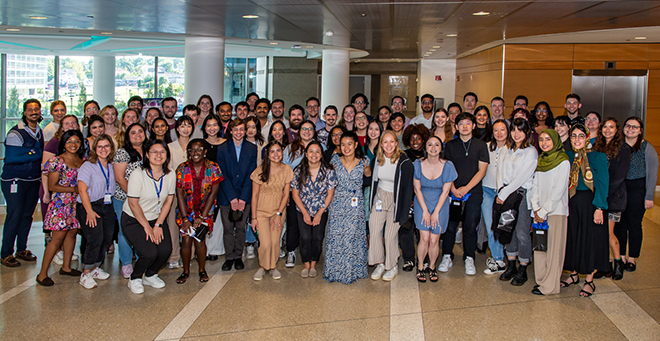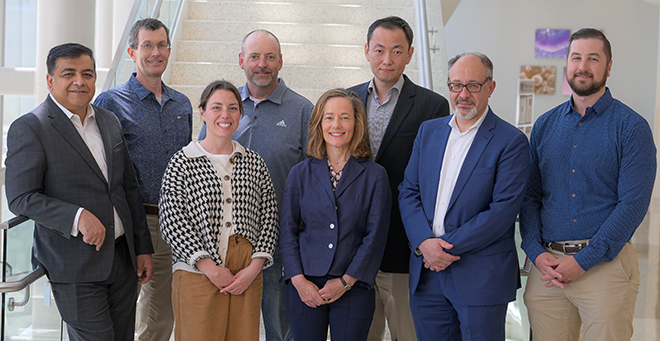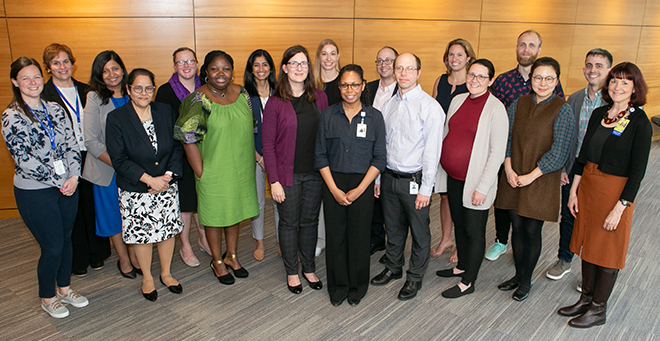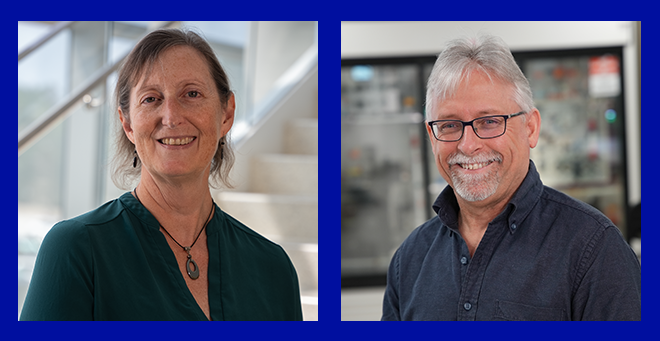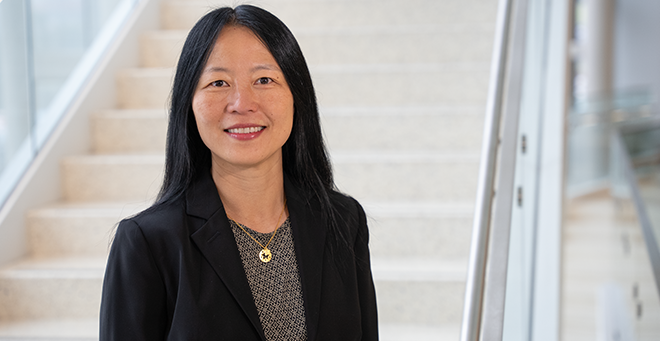Page Menu
Department News
Check out articles from the UMass Chan Office of Communications about the Biochemistry & Molecular Biotechnology Department!
-
Thursday, September 19, 2024
![UMass Memorial Health gift, with matching funds from UMass Foundation, to fund five new endowed chairs at UMass Chan]()
A $5 million philanthropic gift from UMass Memorial Health and $2.5 million in matching funds from the University of Massachusetts Foundation will allow UMass Chan to establish five new ‘UMass Memorial Health’ endowed chairs. Furthermore, seven additional new endowed chairs are being established, meeting the institutional goal of 75 endowed chairs by 2025.
-
Friday, September 13, 2024
![Convocation 2024: UMass Chan racing toward ambitious future]()
Four faculty members were honored with chancellor’s medals, and seven others were invested as named professors at the annual Convocation and Investiture celebration.
-
Thursday, September 12, 2024
![Morningside Graduate School of Biomedical Sciences celebrates largest class at qualifying exam ceremony]()
The Morningside Graduate School of Biomedical Sciences’ largest qualifying class was honored in a ceremony on Sept. 11. Four PhD candidates received the Zelda Haidak Award in Cell Biology.
-
Friday, August 30, 2024
![UMass Chan kicks off 2024 academic year with weeklong Convocation celebration]()
Festivities kick off on Friday, Sept. 6, with the T.H. Chan School of Medicine White Coat Ceremony, welcoming the new class of medical students into the medical community.
-
Tuesday, July 16, 2024
![UMass Chan neuroscientist receives $4.1 million Transformative Research Award to study Down syndrome]()
Summer Thyme, PhD, is the recipient of a five-year, NIH-funded research award to study intellectual disability in neurodevelopmental disorders using zebra fish as a model organism.
-
Wednesday, July 03, 2024
![UMass Chan BRIDGE Fund commits $2M in six faculty projects]()
BRIDGE Innovation and Business Development at UMass Chan Medical School has set aside nearly $2 million in funding for six faculty-led research projects that hold promise for translation to clinical application and commercialization.
-
Tuesday, June 18, 2024
![Morningside Graduate School of Biomedical Sciences celebrates milestones of IMSD, PREP students]()
The year-end celebration highlighted the 22 students enrolled in Postbaccalaureate Research Education Program and the Initiative for Maximizing Student Development program who completed major milestones.
-
Friday, May 24, 2024
![Advancing gender equity, importance of mentoring highlighted at Women’s Faculty Awards]()
The annual awards are sponsored by the Office of Faculty Affairs and the Women’s Faculty Committee of the Diversity and Inclusion Office.
-
Friday, May 17, 2024
![Twenty rising faculty members graduate from Junior Faculty Development Program]()
The 12-month program is the longest-running professional development program at UMass Chan Medical School and has nearly 300 graduates.
-
Friday, May 03, 2024
![Celia A. Schiffer elected to National Academy of Sciences]()
Celia Schiffer, PhD, was elected to the National Academy of Sciences for her distinguished and continuing achievements in original biomedical research.
-
Thursday, April 18, 2024
![Mary Munson, Craig Peterson named American Association for the Advancement of Science fellows]()
The two UMass Chan faculty members are among 500 scientists, engineers and innovators elected this year.
-
Friday, November 03, 2023
![Zhiping Weng named inaugural chair of the Department of Genomics & Computational Biology]()
Zhiping Weng, PhD, the Li Weibo Chair in Biomedical Research, at UMass Chan Medical School, has been named the inaugural chair of the newly formed Department of Genomics & Computational Biology.
![UMass Memorial Health gift, with matching funds from UMass Foundation, to fund five new endowed chairs at UMass Chan]()
![Convocation 2024: UMass Chan racing toward ambitious future]()
![Morningside Graduate School of Biomedical Sciences celebrates largest class at qualifying exam ceremony]()
![UMass Chan kicks off 2024 academic year with weeklong Convocation celebration]()
![UMass Chan neuroscientist receives $4.1 million Transformative Research Award to study Down syndrome]()
![UMass Chan BRIDGE Fund commits $2M in six faculty projects]()
![Morningside Graduate School of Biomedical Sciences celebrates milestones of IMSD, PREP students]()
![Advancing gender equity, importance of mentoring highlighted at Women’s Faculty Awards]()
![Twenty rising faculty members graduate from Junior Faculty Development Program]()
![Celia A. Schiffer elected to National Academy of Sciences]()
![Mary Munson, Craig Peterson named American Association for the Advancement of Science fellows]()
![Zhiping Weng named inaugural chair of the Department of Genomics & Computational Biology]()


